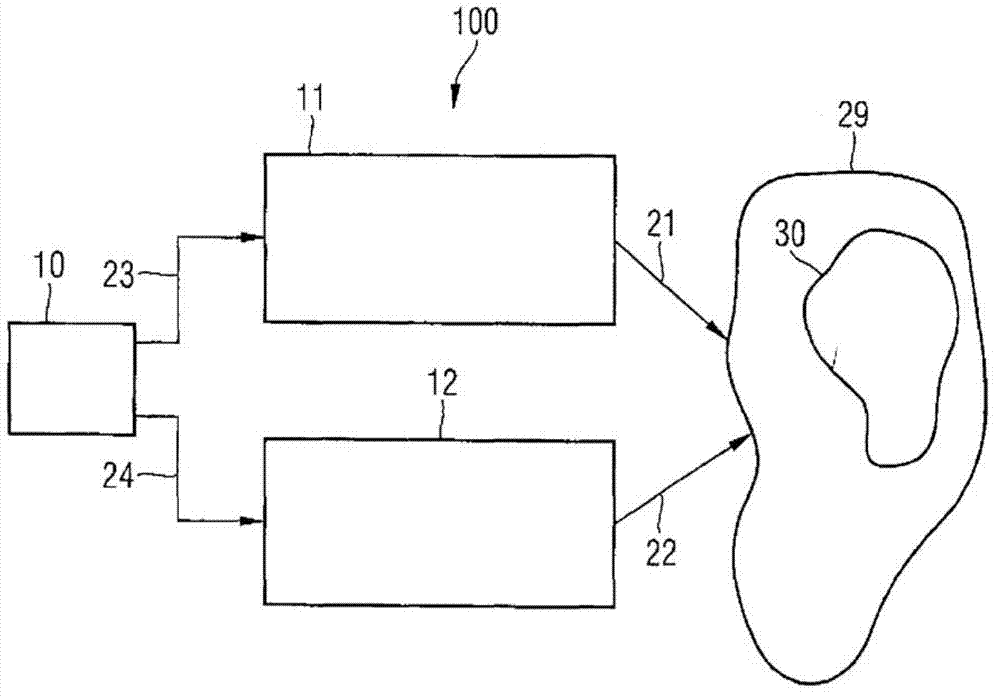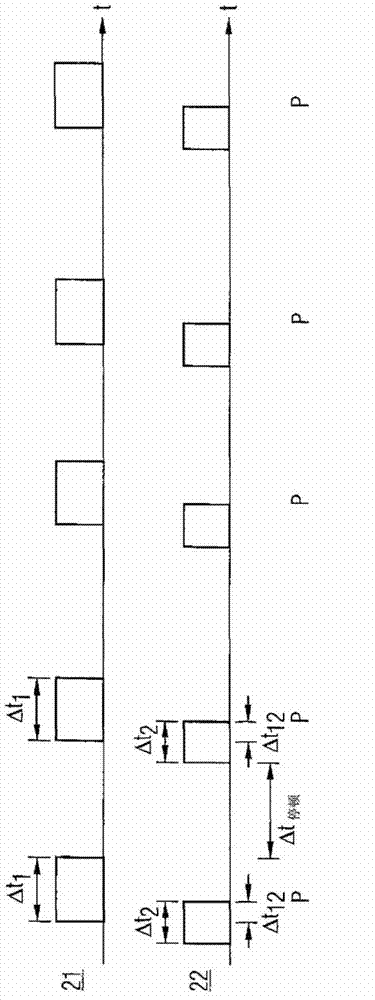Device and method for conditioned desynchronizing non-invasive stimulation
A non-invasive, device-based technology that is used in phototherapy, electrotherapy, radiation therapy, etc.
- Summary
- Abstract
- Description
- Claims
- Application Information
AI Technical Summary
Problems solved by technology
Method used
Image
Examples
Embodiment Construction
[0042] figure 1 A schematic diagram of an apparatus 100 for conditioned desynchronized non-invasive stimulation is shown in . The device 100 consists of a control unit 10 , a first stimulation unit 11 and a second stimulation unit 12 . The first stimulation unit 11 generates a first stimulus 21 and the second stimulation unit 12 generates a second stimulus 22 . Both the first stimulation unit 11 and the second stimulation unit 12 are non-invasive units, that is to say they remain outside the patient's body during operation of the device 100 and are not surgically implanted in the patient's body. The first and second stimuli 21, 22 may be selected from the group consisting of light stimuli, sound stimuli, tactile stimuli, vibration stimuli and thermal stimuli, respectively. The patient can consciously perceive the first and / or second stimulus 21 , 22 . The control unit 10 serves to control the two stimulation units 11 and 12 via control signals 23 and 24 .
[0043] In fact,...
PUM
 Login to View More
Login to View More Abstract
Description
Claims
Application Information
 Login to View More
Login to View More - R&D
- Intellectual Property
- Life Sciences
- Materials
- Tech Scout
- Unparalleled Data Quality
- Higher Quality Content
- 60% Fewer Hallucinations
Browse by: Latest US Patents, China's latest patents, Technical Efficacy Thesaurus, Application Domain, Technology Topic, Popular Technical Reports.
© 2025 PatSnap. All rights reserved.Legal|Privacy policy|Modern Slavery Act Transparency Statement|Sitemap|About US| Contact US: help@patsnap.com



